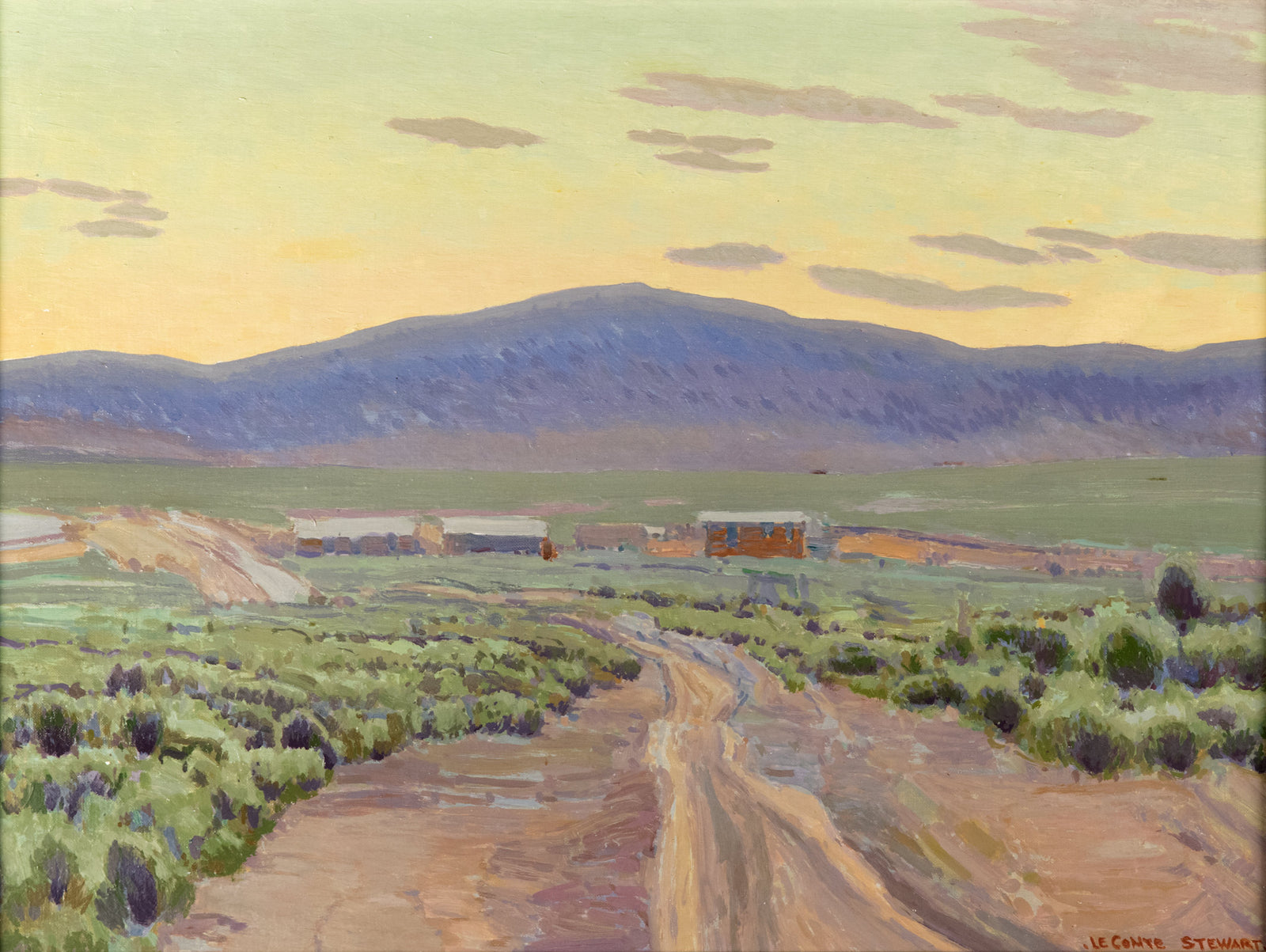Bucket of Blood (Tuscarora, Nevada) by LeConte Stewart


LeConte Stewart (1891-1990) Bucket of Blood (Tuscarora, Nevada) (c. 1935) Oil on canvas board. 18 x 24 in.
The Painting
“Bucket of Blood” is an ominous name, but ultimately mundane. It refers to a small-town supply and liquor store once located in Tusarora, Nevada — just outside Elko — frequented by LeConte Stewart and his friend, the artist Maynard Dixon, on many of their excursions to the remotest regions of the West. The painting is the historic fruit of a relationship between one two of the greatest American landscape painters of their time, produced at a time when Stewart was at the height of his abilities.
It was painted in the late 1930s, around the time that LeConte was settling down into a new position as Director of of the Art Department at the University of Utah. Stewart had known Dixon since 1917 in San Francisco, when the young Utah painter tapped on already famous artist’s door. They subsequently become good friends; with Dixon acting as mentor, and Stewart eventually gaining the respect and admiration of his more-famous companion. Until Dixon’s death in 1946, the two travelled together frequently, becoming so familiar that Stewart even named one of his children “Maynard Dixon Stewart.”
The Artist
Born in Glenwood, Utah, LeConte Stewart was orphaned at a young age; taken in by his paternal Uncle who encourage the boy’s precocious drawing ability. Stewart studied painting at the University of Utah, the Arts Students’ League in Woodstock, New York, and the Pennsylvania Academy of Fine Arts. Returning to Utah, he was called as a missionary to paint the Laie Hawaii Temple for the Church of Jesus Christ of Latter-day Saints, alongside artists A.B. Wright, Torlief Knaphus and Avard Fairbanks.
Unlike many of the Utah artists who had trained in France, where colors were used in bright, often undiluted strength, Stewart was concerned with close observation of nature. When not in the classroom teaching, he could be found in the fields near his home in Kaysville painting in plein air. Stewart is perhaps the most prolific of Utah artists, making thousands of paintings over his 90-year life. But, by his own admission, his best works were produced during the 1930s, when he was closest to Maynard Dixon.

Maynard Dixon (1875-1946) Desert Horizon (1937) Private Collection.
Some fifteen years Stewart’s senior, Dixon had gained fame first as an illustrator for books and magazines, then as a fine figure and landscape artist. He was well known for exaggerating natural shapes and colors in a way that romanticized the grand spaces and unlikely geology of the West. However, around the time of Stewart’s painting of “Bucket of Blood,” Dixon was experimenting a more observational naturalism, as can be seen in Desert Horizon (1937). At this point whether he was influencing Stewart or Stewart was influencing Dixon is unknowable. By this time, the two artists had known each other for more than 20 years, and Dixon had settled in Utah. Their works were becoming increasingly similar in palette, composition, and subject up to Dixon’s death in 1946.


